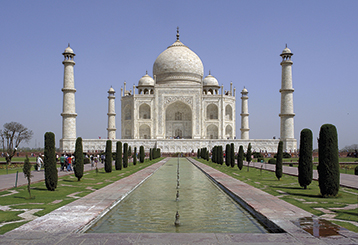 by Sara Seghedoni17
Febbraio
2014
by Sara Seghedoni17
Febbraio
2014
Country Report India
Indian tiles industry keeps growing at a constant rate of 12-14% per year. Total annual production reaches 691 million square metres due to investments which have topped, over the last 5 years, 750 million euros. These are some of the facts reported by Country Report India which is currently being published on CER – the magazine of the ceramic industry, both in pair print and
electronic edition for Ipad (ceramics app).
The main ceramic sectors are wall and floor tiles (respectively 20% and 23% market share), vitrified ceramic tiles (50%), and industrial flooring (7%). Ceramic tiles are available in a great variety of design, texture and finishing effects. Ceramic tile consumption per year per capita (659 million square metres) amounts to 0.50 sq metres per person, less than China (2.6 sq m per person), Europe (5-6 sq m per person) and Brasil (3.4 sq m).
Indian tile market registers a 13% considerable growth per year, which is partly due to the building boom driven by luxury housing and offices. This trend confirms India’s position as one of the top countries in tile consumption.
Abhishek Somany, president of the tile division of ICCTAS – the Indian council of ceramic tiles and sanitaryware, points out as a growing disposable income reflects higher spending on home improvements. Tiles are being upgraded from basic hygiene products (normally just used in bathrooms and kitchens) to more aesthetically pleasing products, suitable also for living rooms and available at an accessible price to most Indian consumers.
According to Somany, the industry’s key factors are the relatively low cost of ceramics and the widespread popularity of decorated tiles. Its weaknesses: dependence on foreign gas import, increase in the cost of labour and lack of standard fiscal laws.
The Indian building sector is expected to become the third largest in the world by 2020, experts say. The Indian planning commission expects total infrastructure spending for the 12th 5 year plan (2012- 2017) to reach 10% of GDP, topping previous plan’s 7.6% (2007-2012). Real estate is expected to grow to $180B by 2020 compared to $55.6B of 2011, driven by an increased demand in residential housing. Infrastructure, industrial building and commercial property have made up 74,2% of India’s 2012 total building industry.
Viral Shah, partner of C. Bhogilal & Company – one of the main distributors for ceramics and sanitaryware – explains that there are three distribution channels in India for ceramic products, the main one being that of an organised distribution network with a central warehouse and several retail agents in the biggest cities.
In modern urban planning architectural development has unfortunately experienced stagnation due to population’s increase and overcrowding. Sanjay Puri, chief architect at Sanjay Puri studio, explains that the city of Pune has grown from only 1.2 million people to 4.4 millions. While the country is experiencing big developments in all sectors including residential, commercial, hospitality and retail sectors, project architects remain few. It is a pity that one of the most important countries in the world in terms of new construction projects is not concerned with architectural values.
To view the entire Iran Country Report, download the magazine issue on the free ' Ceramica ' App from iTunes.
You can also view and download Country Reports for the
- United States (Cer n.331)
- Germany (Cer n.332)
- Ukraine (Cer n.333)
- Turkey (Cer n.334)
- Brazil (Cer n.337
- Mexico (Cer n.338)
- Indonesia (Cer n.340)
- Iran (Cer n.342)
published in various issues of CER il Giornale della ceramica.